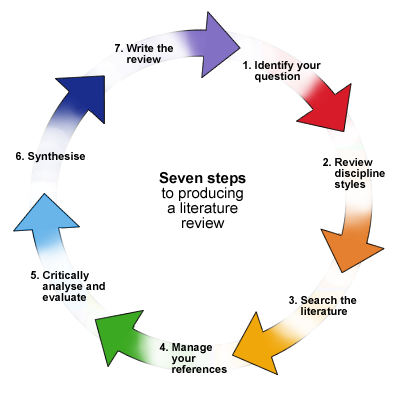A LITERATURE REVIEW: WHAT IS IT?
- Wayne Kisanyanya
- Jan 14, 2024
- 5 min read
A literature review is an analysis of earlier, academic, peer-reviewed studies that have been done on a certain topic. Written in the format of a research article, it usually organizes published studies according to a theme or chronological order. Listing all or a significant fraction of the prior academic, peer-reviewed literature that has been published on a certain topic is the aim of a literature review. In essence, writing a literature review involves compiling and summarizing previous research on a subject from the academic literature.
A literature review can be written as a stand-alone task or as a component of a longer assignment, such a thesis or dissertation. These broad guidelines will hold true regardless of the purpose for which you are preparing a literature review. To locate publications on your subject, use Google Scholar or your preferred academic database. After that, you should organize these articles into themes and make thorough notes. After completing this, you should summarize these sources and create connections between them in your literature review.

Generally speaking, you want to give preference to sources that have been released in the recent five years while producing a literature review. This method of producing a literature review is better because it will enable you to write about the most recent developments in the field related to your subject. Having said that, if a source is a classic work that has never been duplicated or if no one has worked on it in the recent five years, you might want to include it in a literature review. When you write a literature review, it indicates that you have studied the subject matter thoroughly. To produce an excellent literature review, include some classic, older research with the majority of fresh findings.
In the end, composing a literature review entails more than just enumerating the body of knowledge already available on the subject you are studying; it also entails creating connections between the various works that have already addressed your issue. When researching the literature and writing a literature review, exercise critical thinking because the goal is frequently to identify gaps in the available material that need to be filled in order to produce a dissertation or thesis. You can often find a great deal of assistance in selecting a topic for your dissertation, thesis, or even research paper by writing a literature review.
PRESENTING A LITERATURE REVIEW: A GUIDE
Selecting a topic is the first stage in creating a literature review. Your topic may occasionally be given to you or have something to do with writing a thesis or dissertation. In certain instances, you can be composing an independent literature review where you will have the liberty to select the subject matter to write about. To make it easier for you to locate sources for your literature review, it is crucial that you select a topic that has received a lot of publication when writing a literature review. To locate a wide range of literature on your subject, use online databases such as JSTOR, Magenta, and Google Scholar. Read the abstracts of these sources before reading the full texts. This will assist you in assessing their applicability to your literature review writing.
After deciding on a topic and identifying research themes, you need to arrange your literature review. A literary review can be arranged in a certain way, such as chronologically. Organizing the sources you use to write a literature review according to themes is another, more popular strategy. Notwithstanding the methodology employed for writing the literature review, ensure that the various components are arranged in a logical order. When writing a literature review, topic phrases or headings come in very handy since they let you pinpoint particular themes found in the literature or timelines related to the research of the topic you are writing the review on.
Lastly, linking various aspects of the literature you are reviewing is a necessary part of creating a literature review. Writing a literature review for a thesis or dissertation requires connecting the sources, whereas writing one for a lower-level course can only involve noting a few papers that have already been published on your subject. This implies that you will compare and contrast sources in order to look for patterns and distinctions when writing a literature review. Look for inconsistencies and parallels among the sources, and investigate the constraints that the authors of these sources have addressed. This will enable you to compose a literature review that offers guidance to the reader on future study and has a high probability of comprising a significant portion of a thesis, dissertation, or research paper that you may be required to write in the future.

FORMULATING A REVIEW OF LITERATURE
You will probably be requested to format your literature review in one of the following styles: Turabian, MLA, APA, Chicago, or Harvard. It is crucial that you locate a literature review template for the style you have been assigned, or you should locate a style guide for the required citation style, depending on the style that has been assigned to you. You won't lose marks if you properly credit your sources throughout your literature review. Additionally, it's critical to ensure that you properly credit all of your sources in order to prevent plagiarism accusations. Make sure all of your citations are accurate while writing a literature review before turning it in.
It's time to go over your literature review to make sure it is formatted in an orderly and cohesive manner after formatting and referencing it in accordance with the style guide you were given. Write a literature review using strong topic sentences or headings to distinguish between various parts of the literature that you are reviewing, depending on how long it will be. Furthermore, ensuring that your sources are in conversation with one another is essential to drafting a comprehensive literature review. Before submitting your literature review for marking, be sure that both of these requirements are satisfied.
WHAT MAKES A RESEARCH PAPER DIFFERENT FROM A LITERATURE REVIEW?
A literature review is usually an integral part of a research paper, which is the primary distinction between the two types of papers. A literature review is usually the part of a research paper, dissertation, or thesis that gives context for the research issue being examined within the current literature, though you may be requested to write one separately. This is something you should have in mind when writing a literature review because, unlike research papers, standalone literature reviews do not always have a thesis. Instead, a stand-alone literature review is frequently required to show that, even in the absence of a thesis, you are capable of carrying out academic research on a subject. If you are writing a literature review separate from a research paper, dissertation, or thesis, bear this in mind.



Comments